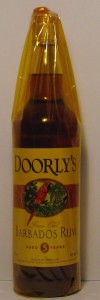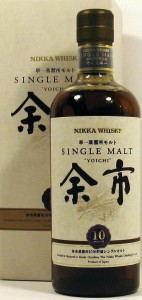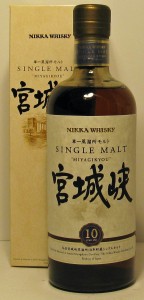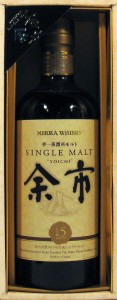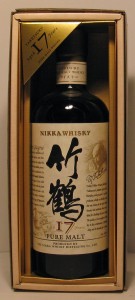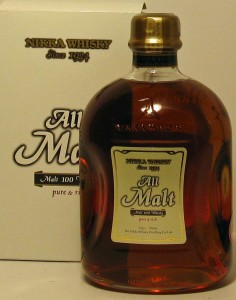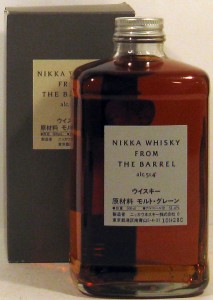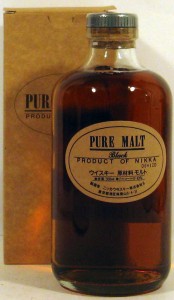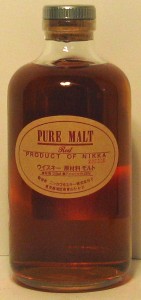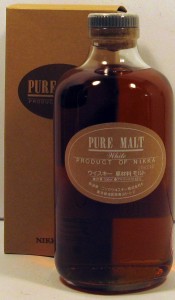There are a huge range of malt whiskies on the market these days, and one of the notable aspects of this, is the diverse range of styles of whisky, dependent upon location and production. Within this, many distilleries develop, along with their traditional styles many experimental casks and bottlings, thus consistently challenging our taste buds, and perceptions of whisky as a whole. One of the distilleries at the forefront of such experimentation is Bruichladdich, who produce an excellent standard range alongside many limited bottlings of very differing whiskies.
The Bruichladdich distillery began in 1881 and produced traditional Islay style whiskies until 1994 when, due to various buy outs, the distillery was closed. This remained the case until 2000, when a group of investors purchased the distillery, renovated and updated the place and reopened in 2001. The new owners pride themselves on Bruichladdich being Scotland’s ‘purest malt,’ free from chill filtration, colouring and homogenisation. Due to the nature of Bruichladdich’s production and experimentation some of the whiskies in this blog are very limited, but were all available at the time of writing.
For an excellent introduction to this distillery’s offerings, the Bruichladdich Waves 7 Years Old Single Malt Scotch Whisky, is bursting with cranberry, vanilla, raisin and peat smoke and is an exquisite round Islay style but with a soft mouthfeel.
Bruichladdich Second Edition 12 Years Old Single Malt Scotch Whisky is matured in bourbon casks which give this malt a strong creamy vanilla tang. This is a light style of Islay though and as such works well as an aperitif.
A couple of further aged bottlings which are excellent include the Bruichladdich Second Edition 15 Years Old Single Malt Scotch Whisky, which has a delicate coastal nose, with hints of apricots, followed up on the palate by marmalade and pepper. This is a restrained Islay, and an elegant offering from the range. The Bruichladdich Single Malt Scotch Whisky 20 Years Old, likewise has an elegance and youthfulness which defies its age, but has a more buttery palate and a concentrated yet distant hint of smoke, a most luxurious and succulent malt.
For those who prefer a richer, rounder style of malt, try the Bruichladdich Single Malt Scotch Whisky 18 Years Old. This fantastic dram is aged in bourbon casks for 18 years before further ageing in auslese and pinot noir casks, resulting in a remarkably fruity and complex whisky with a hint of sweetness balancing the gentle smoke.
Bruichladdich Infinity Single Malt Scotch Whisky is a crisp yet fruity style with smooth pear notes intermingled with smoke and vanilla. This is a blended malt from the distillery and perhaps has a more typical Islay style due to the pronounced peat.
Of very limited quantities, the Bruichladdich Single Malt Scotch Whisky 16 Years Old Cuvee Margaux is a bourbon aged malt which is then introduced to further ageing in Chateau Margaux casks. Part of the ‘Bordeaux first growth’ series this is lightly peated with vanilla tones and a wine fruit character.
The highest echelon in the Bruichladdich range is the ‘legacy series,’ highly limited malts which date from the pre 2000 purchase of the distillery. These are of course no longer in production and most of them are now sold out. The whiskies are presented in beautiful tins depicting paintings by the artist Frances Mcdonald. Two special examples of these are the Bruichladdich Single Malt Scotch Whisky 32 Years Old Legacy Series Four, which is sublimely soft sweet and fruity with an integration of honey and almonds, and a pleasing oak backbone. There were just 900 bottles of this made.
Bruichladdich Single Malt Scotch Whisky , Legacy Series Six 34 Years Old is a marriage of casks dating from 1965, 1970 and 1970, and is an incredibly mellow dram with hints of cinnamon spice, vanilla and mint, and is a collectors dream. This is the last of the legacy series and there were 1700 bottles made.
Other limited Bruichladdich bottlings include the impressive Bruichladdich Redder Still Single Malt Scotch Whisky. This is a 22 year old malt aged in bourbon casks before enhancement in Chateau Lafleur Pomerol casks. Smooth and silky with hints of red fruit and vanilla, with a lovely malted barley finish, this malt is recommended with a drop of spring water (it is cask strength at 50.5%), to really expose the layers of nuanced character.
For those who would like to sample a real pile driver from the distillery, try to get your hands on the powerful Bruichladdich Port Charlotte PC6 Single Malt Scotch Whisky, which is packed with smouldering peat, bonfire smoke and sweet citrus. This is simply an awesome expression of what Islay malt is all about, but retains the innovative character that this brilliant distillery prides itself on.
Any of these malts will give whisky connoisseurs great pleasure, and due to the continual developments of the distillery, and the diversity of the products on offer, I would strongly recommend regular visits to the Alexander Hadleigh website, to ensure one does not miss out on new and limited bottlings when they are released.
HAPPY BRUICHLADDICH DAYS
JAMES M
Written by
siteadmin (click for further articles)
![]() is a most refreshing rum and blends well to make some of the worlds finest cocktails.
is a most refreshing rum and blends well to make some of the worlds finest cocktails.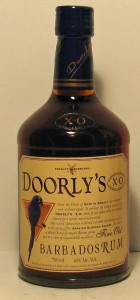 Doorly’s XO, very old rums are selected by the master blender and matured for a second time in Spanish oloroso sherry casks, producing a delicious fusing of the complex flavours from the cask and the well-aged rums.
Doorly’s XO, very old rums are selected by the master blender and matured for a second time in Spanish oloroso sherry casks, producing a delicious fusing of the complex flavours from the cask and the well-aged rums. Comments Off on RL Seale and Doorly’s Fine Rum
Comments Off on RL Seale and Doorly’s Fine Rum 
